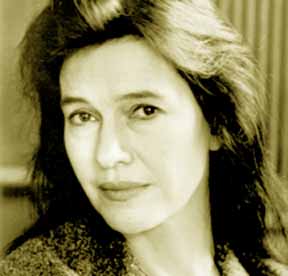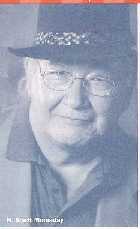A Few Assertions About the
Nature of History
- History is not independent of interpretation. Facts are always
placed within a framework.
- History is both objective and subjective. It has "a
factual impact". Certain historical records, occurrences, and data exist
independent of us and do guide and shape the way we interpret, yet history also has a
personal shape; different people ask different questions and end up with differing
observations about what the facts mean.
- History is a narrative: 1) it often focuses on individuals, their
identities, and their relationships with institutions; 2) it has a certain sequence and
contingency with a narrative pattern -- one thing "follows" another for a
reason; 3) it has a "story-worthiness" that explains why we are concerned with
it; 4) it often has a certain "trajectory of culmination," a certain end or
purpose that the historian feels it is leading up to.
- History may also have a deep sense of connection with the teller: it
helps explain who we presently are. (e.g. The Exodus, Christ's resurrection)
- History, from a Christian perspective, includes an account of God's
actions in the past. History, therefore, also shapes our faith: we better understand
what we believe on the basis of what God has done for us.
[Some of these ideas are from Frykenberg, Robert Eric. History
& Belief: The Foundations of Historical Understanding. Grand Rapids: Eerdmans,
1996.]
Momaday and Place
"I tried to express the notion
first that the Native American ethic with respect to the physical world is a matter of reciprocal
appropriation; appropriations in which man invests himself in the landscape,
and at the same time incorporates the landscape into his own most fundamental experience.
That suggests a dichotomy, or a paradox, and I think it is a paradox. It is difficult to
understand a relationship which is defined in these terms, and yet I don't know how much
better to define it."
"Secondly, this appropriation
is primarily a matter of the imagination. The appropriation is realized through an
act of the imagination which is moral and kind. I mean to say that we are all, I suppose,
at the most fundamental level what we imagine ourselves to be. [. . .] Rather, he is
someone who thinks as himself in a particular way and comprehends his relationship to the
physical world. He imagines himself in terms of that relationship and others. And it is
that act of the imagination, which I think constitutes his understanding of the physical
world."
"Thirdly, this imagining, this
understanding of the relationship between man and the landscape, or man and the physical
world, man and nature, proceeds from a racial or cultural experience. I think his
attitude toward the landscape has been formulated over a long period of time, and the
length of time itself suggests and evolutionary process perhaps instead of a purely
rational and decisive experience. [. . .] I mean that the Indian
has determined himself in his imagination over part of his understanding. He
understands himself more clearly than perhaps other people, given his situation in time
and space period."
-- N. Scott Momaday, "The Native American Way of
Seeing" [italics mine]
Questions on "The Way to Rainy Mountain"
- What is Momaday's view of the Oklahoma landscape in general and Rainy
Mountain in particular? How does this place express who he is and who his people
are?
- How is Kiowa history tied to the Plains Culture? How does it
shape their sensibility?
- How is Momaday's grandmother, as well as Ko-sahn, tied to this place
and memory?
- In what way does the Kiowa past shape their present?
- What view of history is present in Momaday's interpretations of the
Kiowa stories?
- What does Momaday's view of place and history have to say to
Christians?
Erdrich and Some Aspects of Magical Realism
- magical realism: "an unexpected alteration of
reality [. . .] an unaccustomed insight that is singularly favored by the unexpected
richness of reality or an amplification of the scale and categories of reality"
(Alejo Carpentier)
- More specifically, magical realism achieves its particular power by
weaving together elements we tend to associate with European realism and elements we
associate with the fabulous, and these two worlds undergo a "closeness or
near merging."
- This takes two forms: an epistemological one, where
"the nuances stem from an observer’s visions" and an ontological
one, "in which America is considered to be itself marvelous" (Wendy
Faris). In other words, magical realism can achieve its effects by either making marvelous
a certain character's perceptions and/or by making the setting itself marvelous.
- Magical realism a tendency to defamiliarize the
scene for readers; readers learn that they have not come entirely ready to understand the
situation, that what we thought we knew is found to be strange, for it has something
entirely unexpected to teach us.
- Magical realism’s readers learn "border
skipping" because they must move between fabulism and European realism
(Rowland Wilson).
Questions on "Fleur"
- How does the narrator ask us to move between naturalism and magical
or supernatural viewpoints?
- Is the "magical realism" of this story more epistemological
or ontological?
- Who (or what) is Fleur? How does Pauline the narrator describe
her? How are we to view her power?
- What is Fleur's relationship to Native American myth and tradition?
- How are we to view the men who work at Koska's Meats? Do they
deserve what happens to them?
- What does Lily's battle with the sow represent?
- What is Pauline suggesting at the end of the story by observing,
"The blood draws us back, as if it runs through a vein of earth"? (2394)
- Why when the old men retell the story of Fleur do they "only
know they don't know anything"? (2394)
- How would you compare and contrast Erdrich's "Fleur" with
Harjo's "The Flood"?
|

